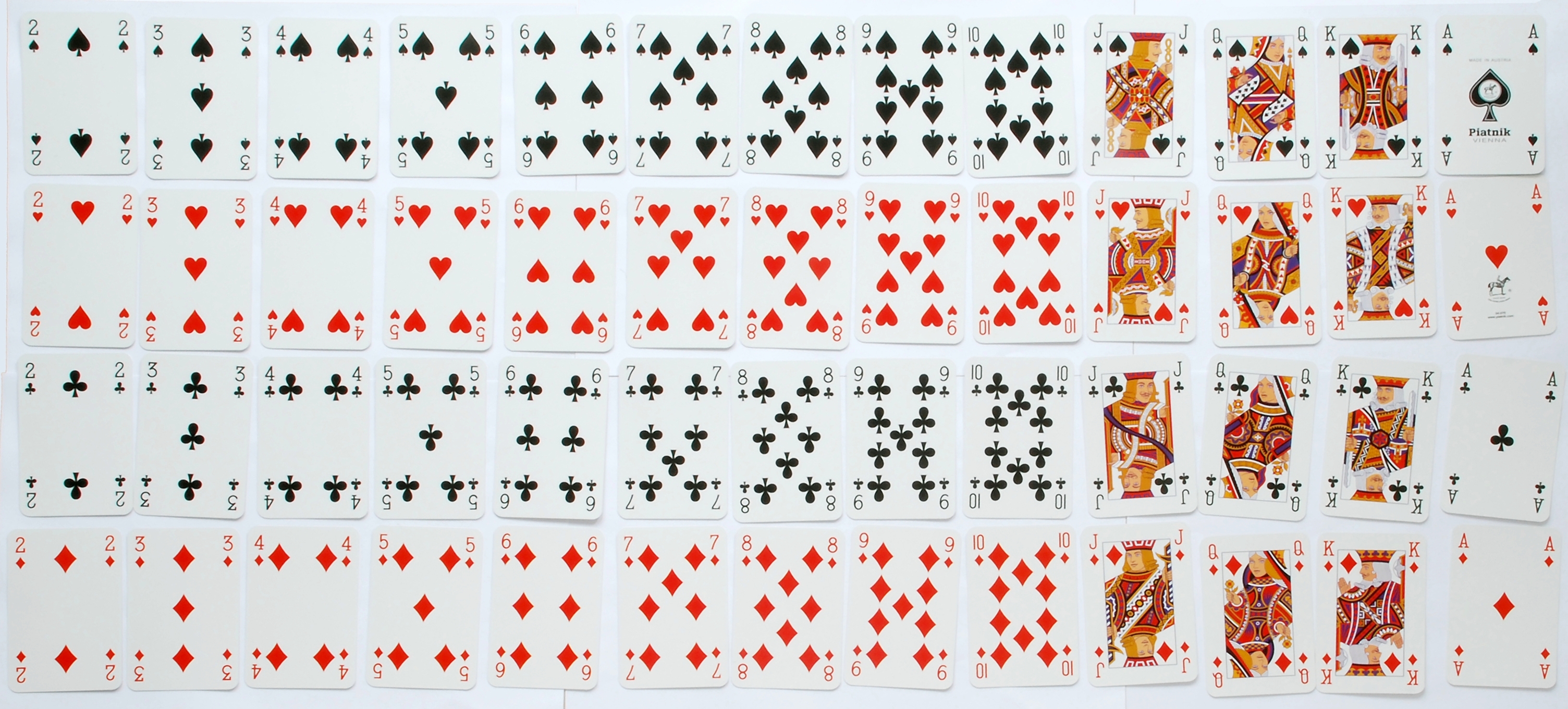|
Buraco
Buraco is a Rummy-type card game in the Canasta family for four players in fixed partnerships in which the aim is to lay down combinations in groups of cards of equal rank and suit sequences, there being a bonus for combinations of seven cards or more. Buraco is a variation of Canasta which allows both standard melds (groups of cards of the same value) as well as sequences (cards in numerical order in the same suit). It originated from Uruguay and Argentina in the mid-1940s,Oxford Dictionary of Card Games, David Parlett, pg. 53 Oxford University Press (1996) with apparent characteristics of simplicity and implications that are often unforeseeable and absolutely involving. Its name derives from the Portuguese word "buraco" which means “hole”, applied to the minus score of any of the two partnerships. The game is also popular in the Arab world, specifically in the Persian Gulf; where it is known as 'Baraziliya' (Brazilian). Another popular variation of Buraco is Italian. Game ... [...More Info...] [...Related Items...] OR: [Wikipedia] [Google] [Baidu] |
Biriba
Biriba (Greek: Μπιρίμπα) is a Greek variant of rummy card game based on the Italian Pinnacola. It is played by two to six players, with two decks and 4 Jokers comprising 108 cards. If 6 players play, one more deck and two jokers more are added. Biriba can also be played by three players with or without partnership rules. The Greek name may come from the Italian game Biribara, or Biribisso, or Biribi, even if this game is totally different (more similar to the roulette). Basics While there are many variations of Biriba, the basic rules and objective are the same. The player to the right of the dealer shuffles the cards and their partner cuts the deck (the starting dealer is selected by a random draw, the lowest card winning the privilege to receive cards and play first.) Eleven cards are dealt to each player while two other sets of 11 cards are also dealt by one of the opponents and put face down to the side. These cards (two secondary 11-card hands) are called Paket ... [...More Info...] [...Related Items...] OR: [Wikipedia] [Google] [Baidu] |
Canasta
Canasta (; Spanish language, Spanish for "basket") is a card game of the rummy family of games believed to be a variant of 500 rum. Although many variations exist for two, three, five or six players, it is most commonly played by four in two partnerships with two standard decks of cards. Players attempt to make Meld (cards), melds of seven cards of the same rank and "go out" by playing all cards in their hands. History The game of Canasta was devised by attorney Segundo Sánchez Santos and his Contract bridge, Bridge partner, architect Alberto Serrato in Montevideo, Uruguay, in 1939,American Heritage Dictionar''Spanish Word Histories and Mysteries: English Words That Come from Spanish'' Houghton Mifflin Harcourt (2007), in an attempt to design a time-efficient game that was as engaging as Bridge. They tried different formulas before inviting Arturo Gómez Hartley and Ricardo Sanguinetti to test their game. After a positive reception of Canasta at their local bridge club, the J ... [...More Info...] [...Related Items...] OR: [Wikipedia] [Google] [Baidu] |
Rummy
Rummy is a group of games related by the feature of matching playing cards, cards of the same rank or sequence and same suit. The basic goal in any form of rummy is to build ''Meld (cards), melds'' which can be either Set (cards), sets (three or four of a kind of the same rank) or Run (cards), runs (three or more sequential cards of the same suit) and either be first to Go out (cards), go out or to amass more points than the opposition. Origin There are two common theories about the origin of rummy, attributing its origins in either Mexico or China in the nineteenth century. The first is that it originated in Mexico around the 1890s in a game described as Conquian in R.F. Foster's book ''Foster's Complete Hoyle'', which was played with a 40 card Spanish deck and had melding mechanics. The second is that Rummy originated in Asia, and that Rummy was the result of a Mahjongg, Mahjong variant named Kun P'ai that was Westernized as Khanhoo by W.H. Wilkinson in 1891. Games schola ... [...More Info...] [...Related Items...] OR: [Wikipedia] [Google] [Baidu] |
French Playing Cards
French-suited playing cards or French-suited cards are playing cards, cards that use the French Playing card suit, suits of (clovers or clubs ), (tiles or diamonds ), (hearts ), and (pikes or spades ). Each suit contains three or four face cards, face/court cards. In a standard 52-card deck these are the (jack (playing card), knave or jack), the (queen (playing card), lady or queen), and the (king (playing card), king). In addition, in Tarot packs, there is a (Knight (playing card), knight) ranking between the queen and the jack. Aside from these aspects, decks can include a wide variety of regional and national patterns, which often have stripped deck, different deck sizes. In comparison to Spanish playing cards, Spanish, Italian playing cards, Italian, German playing cards, German, and Swiss playing cards, French cards are the most widespread due to the geopolitical, commercial, and cultural influence of France, the United Kingdom, and the United States ... [...More Info...] [...Related Items...] OR: [Wikipedia] [Google] [Baidu] |


